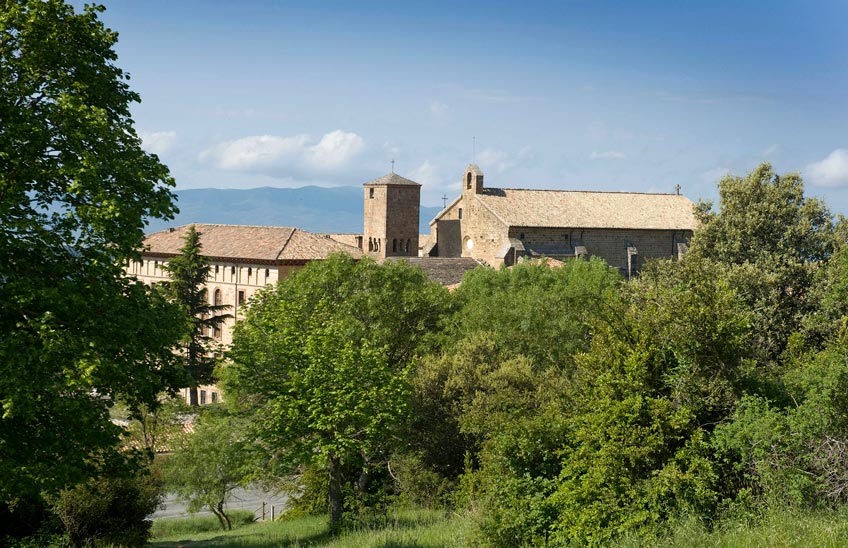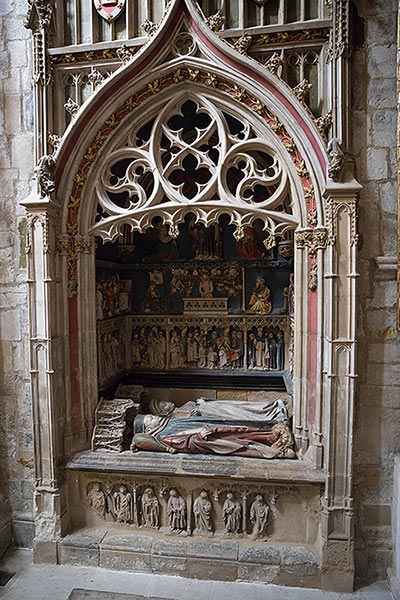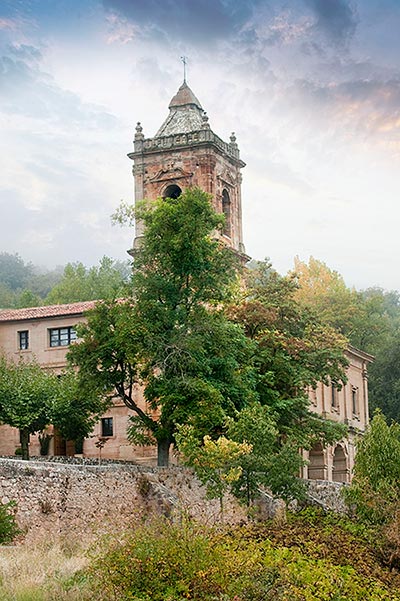Enjoying cultural heritage

PhotoJ. L. Larrión/View of the monastery of Leire
Cultural heritage can be understood from different perspectives: from its purely historical aspects (promotion, execution, creation, prices, dating, etc.), to aesthetic, technical, iconographic (meaning and message) and use and function. Complementing and playing a leading role in our vision and recreation of the past are cultural assets in the form of bridges, cathedrals, monasteries, stained glass windows, gold and silverware, cloister reliefs, organs, shawms and engravings.
Looking, seeing and reading through cultural heritage is a profitable exercise when it comes to making readings on core topic of numerous sites from the past. We are familiar with texts by different authors, in which they point out the difference between the act of "looking" and "seeing", attributing to the mass of the population the inability to pass from one stage to the other, understanding the perception of the works as a true intellectual act that required the capacity for judgement and discernment, forbidden to the majority of the public. The saying "To see, one must look and know" is well known. With regard to "reading", Lope de Vega, when dealing with a biblical episode, stated: "In an image I read this story" and Father Sigüenza, referring to a painting by Bosch, asserted: "I confess that I read more in this panel..., than in other books in many days". The challenge for the scholar and for the citizen, nowadays, consists of carrying out analyses and plausible readings of images produced in contexts so different from today's and with codes that are often alien to those of our time.
In 2009, publishing house Chair published, among its essays, a delightful book by Víctor I. Stoichita graduate "How to savour a painting", in which he discusses the joy produced by the contemplation of a work of art and how the pleasure increases as we get to know the context in which it was created and its promoters. Its pages are an example for understanding the effectiveness and power of images, in times when time for their observation was abundant, and their contemplation generated different sensations and evaluations. With time and without haste, among the more or less obvious, we find elements that lead us to discover and savour the content of the figurative arts.
<i>“Sorprenderse y maravillarse es comenzar a entender”</i>
This beautiful reflection by José Ortega y Gasset illustrates the importance of the curiosity with which we should approach the contemplation of cultural heritage. This quality is characteristic of avid people and, in general, of anyone who wants to learn and investigate. Moreover, on more than a few occasions, this curiosity is the cause of finding ideas for new insights into something that no one has done before. Along with curiosity, we must sharpen our capacity for observation, in line with the statement by A. Dumas: "he who reads learns a lot; but he who observes learns more". And never forget the thought of Ramón Mª del Valle-Inclán, when he said about discovering "the arcane of things that seem vulgar and are marvellous".

Sepulchre of Chancellor Villaespesa in Tudela Cathedral, c. 1420. Photo Blanca Aldanondo. Newspaper of Navarre
The diversification of cultural strata in traditional society, with very high levels of illiteracy, can lead us to some areas of artistic and literary significance reserved for cultured minorities, in a phenomenon that we can call "semantic discrimination". There are, therefore, different levels of reading, both to please the masses and the more elitist and refined minorities. In the theatre there were also quotations and erudite references inaccessible to the understanding of the unlettered. Alongside an immediate, narrative and "linear" storyline, there were subplots and symbolic elements that acted as a rhetorical complement that could only be understood by the educated. Something similar occurred in certain artistic compositions, particularly when the patron or the artist possessed literary and cultured resources.
Part of the majority of the public enjoyed everything that made a vivid impression on their senses. On the other hand, a cultivated minority sought to go further and distrusted what the majority approved of, looking behind appearances. A whole world of symbols and signs that were difficult to interpret turned book covers, commemorative medals and certain paintings into veritable exercises in ingenuity and wit.
An advanced and free society must safeguard and properly manage its heritage.
An advanced, cultured society with high levels of well-being cannot allow its cultural heritage to be absent from its daily life. Progress, to a certain extent, can be measured by the cultural level it has reached. This has led to a great social demand in developed countries for the use and enjoyment of cultural goods. This has become a demand on institutions, which has translated into the right of citizens to culture, as recognised in various constitutional texts. The latter has also led to an assessment of the risks posed by overcrowding and the positive and negative aspects of cultural tourism.

Sanctuary of the Virgin of Codés. Photo J. L. Larrión
The knowledge and evaluation of the heritage is the best guarantee for its protection and conservation, in order to bequeath it as the best gift of what we received from the generations that preceded us as the testimony and report of the meaning that the places and objects had for them.
Finally, it should be stressed that the use and enjoyment of cultural heritage can and should be profitable from a management that involves its research, conservation and dissemination. The guidelines of UNESCO and other organisations insist on the knowledge, dissemination and awareness of cultural property, proposing to the states programmes of Education and information through courses, conferences and seminars in all Degrees of the teaching, both formal and informal, in order to promote and enhance the cultural value and educational of the same.
source Among the numerous texts issued by high-level institutions, we should highlight one from the 1985 Convention for the Safeguarding of Europe's Architectural Heritage, which calls for "raising public awareness of the value of architectural heritage not only as an element of cultural identity, but also as a source of inspiration and creativity for present and future generations". As Leopoldo Alas, Clarín, said: "the first thing you need to do to say what is new is to know the old well".
